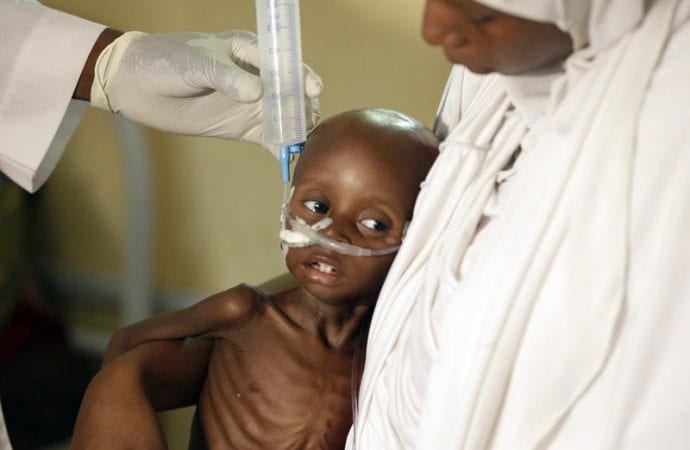A new study says 45 percent of child deaths in Africa is due to insufficient food, and officials from Caritas fear the situation is not getting better.
The report from the African Child Policy Forum says child hunger “is the most extreme form of child deprivation.”
“Hunger kills, often silently and slowly. It affects and damages children’s health, hinders their capacity to learn, and reduces their ability to earn as much as their better-off peers,” it continues.
The study says nearly 60 million children in Africa do not have enough food despite the continent’s economic growth in recent years.
“It is the offspring of the unholy alliance of political indifference, unaccountable governance, and economic mismanagement. Persistent and naked though the reality is, it remains a silent tragedy, one that remains largely unacknowledged and tolerated, perhaps because it is a poor man’s problem,” said Assefa Bequele, ACPF’s executive director, following the release of the report on May 22.
“It is completely unacceptable that children are still going hungry in Africa in the 21st century. The statistics are truly alarming. Child hunger is driven by extreme poverty, uneven and unequal economic growth, gender inequality and a broken food system. Although Africa now produces more food than ever, it hasn’t resulted in better diets,” he said.
Caritas officials in two Southern African countries told Crux the situation is getting worse.
Both countries are not specifically mentioned in the report, but child malnutrition levels in Malawi are so high that half of all child mortalities are caused by hunger, while 40 percent of Zambian children are stunted.
Mercy Chirambo of Caritas Malawi noted “the report links hunger with the issue of policies and politics.”
She said hunger is also linked with public health deficiencies.
“For pregnant or lactating mothers, access to health services or antenatal and postnatal care is a big challenge especially in the rural areas where the majority of people live. The issue is also exacerbated by lack of knowledge among the rural masses on proper food nutrition and an agricultural system that is short of crop diversification,” Chirambo told Crux.
She also said malnutrition falls disproportionately on rural children in the least-developed and developing countries.
Musamba Mubanga of Caritas Zambia said child malnutrition is mostly attributed to food insecurity at the household level especially in the rural areas.
“Most households can only afford one meal a day and the diets are mostly poor,” she told Crux.
“Dietary diversity in Zambia is a major challenge. Children do not consume food from enough food groups, with only 22 percent of children age 6-23 months found to have sufficient dietary diversity according to infant and young child feeding guidelines,” Mubanga continued. In addition there are “poor caring practices for women and children especially between the ages of 2 months and 2 years when feeding is critical, especially breast feeding.”
She said “lack of access to clean water is a key factor in the persistence of chronic malnutrition in Zambia.”
The African Child Policy Forum report notes that conflict zones and issues relating to climate change lie at the heart of the crisis of hunger in Africa.
It indicates that 75 percent of the continent’s stunted children under the age of five live in war-torn zones.
“In areas experiencing protracted conflicts, the rate of undernourishment in children is about two to three times higher,” the report explains.
Furthermore, two years ago eight million people in Ethiopia, five million in Malawi, four million in Zimbabwe and three million in Kenya were affected by acute food insecurity caused by issues relating to the climate crisis.
Chirambo said that “more pro-poor and pro-women policies in Africa” should be put in place.
“Not only having the policies but also effectively implementing them. For most countries, good policies are available, but implementation is a challenge,” she said.
She said Caritas Malawi has been implementing livelihood projects focusing on agriculture and promoting “sustainable and diversified agriculture in the rural communities to ensure that families in the rural areas have enough food for their household consumption.”
She said the charity was also promoting access to food through farming but also through “Village Savings and Loans” to ensure that families “are able to access food through the market to supplement their harvest. We have also been involved in cooking demonstrations targeting both men and women to raise awareness on the proper food compositions and preparation methods for improved nutrition.”

